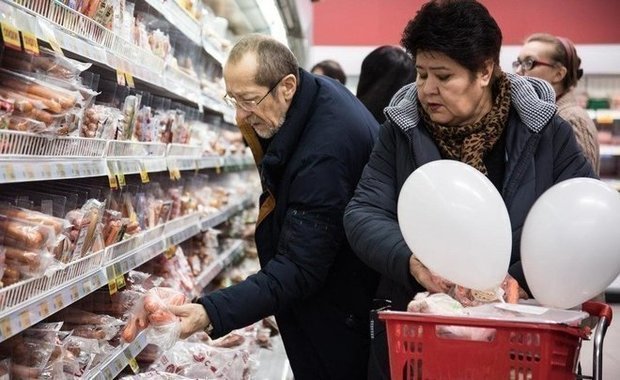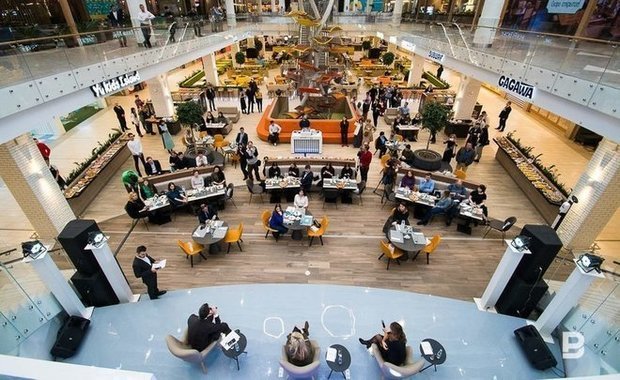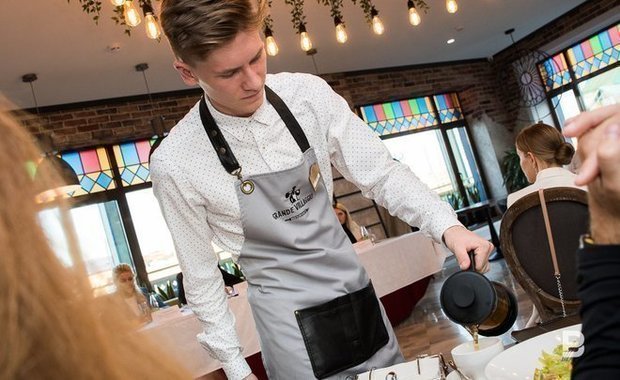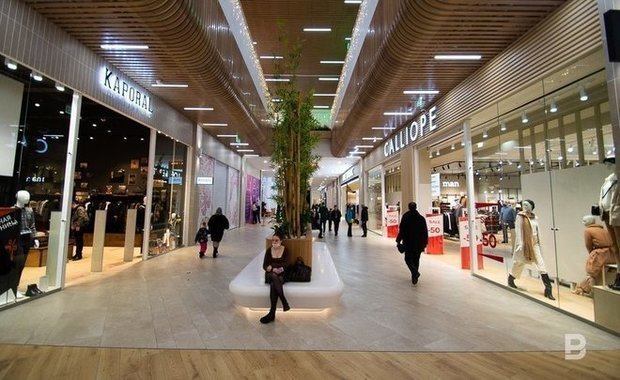Trillion rubles for purchases, restaurants, and services: Tatarstan’s retail market growing faster than expected

Despite the difficult situation in the economy, the consumer market of Tatarstan is actively growing. Inflation, which has accelerated this year, undoubtedly contributes to this growth. Non-food retail overcame the negative impact of sanctions and grew by 10,9% in 9 months to 545,1 billion rubles. Food retail developed at a more moderate pace — only plus 7,4% compared to last year. The situation is best in catering — plus 18,1% compared to last year's turnover. Whether such dynamics will continue in the conditions of more expensive lending and whether consumers are willing to spend money — in the review of the analytical service of Realnoe Vremya.
Retail trade turnover in Tatarstan exceeded 1 trillion rubles for 9 months of 2023. It grew by 9,3% to the same period last year. The market recovered after last year's fall, when retail in the republic decreased by 2,4% due to sanctions and the crisis caused by them.
In 2023, retailers managed to build new logistics chains and cooperation with partners from friendly countries. As a result, the turnover of food trade increased by 7,4% to 456,5 billion rubles, and non-food retail increased by 10,9% to 545,1 billion rubles. However, the significant growth in non-food retail is mainly due to the low base of last year, when this sector collapsed by 7,6%.

Retail trade turnover per capita in Tatarstan increased from 230,065 to 250,367 rubles for 9 months of 2023.
The number of trade enterprises decreased by more than a thousand, and the number of markets by seven — from 28 to 21. Despite this, the availability of retail space per 1,000 residents increased from 891,9 to 941,6 square metres.

Restaurants set records
The turnover of public catering in Tatarstan increased by 18,1% to 48,8 billion rubles for 9 months of 2023, and the consumer services market increased by 5,9% to 45,8 billion rubles. At the same time, the dynamics of the growth of household services in comparison with 2022 began to slow down.
The number of catering facilities has also increased (by 380 units), as well as the number of public service facilities (by 305 units).

Retail trade turnover steadily grows and has almost doubled over the past decade: from 21,4 trillion rubles in 2012 to 42,58 trillion rubles in 2022.
According to the forecasts of Infoline agency, in 2023 the turnover of the entire food retail will continue to grow and is going to exceed 21,5 trillion rubles (+5,6%). At the same time, the share of the ten largest retail chains in the market may increase from 38,5% to 41,9% year on year. Last year, industry experts predicted that by 2025 the volume of the grocery retail market could reach 24 trillion rubles, and by 2030 — 29,5 trillion rubles. However, due to the acceleration of inflation, this level may be reached earlier.
The year 2022 was a disaster
Last year, retail trade experienced several sharp ups and downs associated with the imposition of sanctions and subsequent structural changes in the industry. By the results of the year, retail turnover in Russia decreased by 6,7% in comparable prices, while sales of food products decreased by 1,5%, non-food products — by 11,1%.
The market decline was deeper than in the pandemic year 2020, when the market turnover decreased by 3,2%. The share of food products, including beverages, and tobacco products has sharply increased (from 47% in 2021 to 49,5% in 2022), which is typical for crisis periods in the economy.
M.A.Research analysts also attributed a noticeable increase in the share of food products in retail trade turnover to a jump in food prices in March-April 2022, after which prices for many goods continued to rise, and the decline mainly affected fruit and vegetable products in August-September 2022.

Ministry of Economy's initial forecast was more pessimistic
In April 2023, the Ministry of Economic Development predicted that retail trade in Russia in 2023 would grow by only 5,3%. But in September last year, officials were even more pessimistic — the growth of retail trade turnover in Russia in 2023 was forecasted not to exceed 2,7%.
It was expected that demand would recover as the population's propensity to save normalised and as consumer lending grew.

At the same time, if growth in Sisley, according to Yagudin's estimates, can be attributed to inflation, then in Indever business turnover is growing faster than inflation in 2023.
Consumer demand, according to him, still did not grow much. “It is good that with higher prices for goods, it has not decreased at all. There is no total drop in demand, despite the growth of exchange rates and inflation," the entrepreneur stressed. At the same time, sales records at both Sisley and Indever have been set this year.

Mikhail Sharipov emphasises that it is not quantitative, but qualitative growth that is more important for the industry. “I would like representatives of the industry, especially in the field of fast food, to monitor the products they purchase and create decent working conditions for staff," he commented.
Mikhail Klopoukh, the founder of Po Chesnoku chain of restaurants, explains the growth of catering by several factors at once.

Secondly, in his opinion, the development of a culture of eating out also contributes to the growth of catering. The culture of catering is becoming part of our way of life, and this affects the growth of the industry.
But the impact of inflation shouldn't be discounted. “In conditions of inflation, the cost of food and catering services is increasing. In general, the growth of catering is explained by a combination of several factors — the recovery of consumer demand, the development of a culture of eating out and inflation," the restaurateur sums up.
Further forecasts will also depend on many factors, but in any case it will be a positive trend.
Acceleration of consumption is influenced by the growth of wages
“Consumption was supported this year by the accelerated growth of wages of the population, which is based on a record shortage of labour, deferred demand, as well as high growth rates of retail lending," commented Olga Belenkaya, the head of the Macroeconomic Analysis Department at Finam.

The increase in the key rate and, accordingly, the rise in the cost of lending will slow down the growth rate of consumer spending at the end of this year and next year. An increase in interest rates on deposits may also shift the behaviour of households towards a savings model for several quarters, during which the Bank of Russia plans to maintain a tight monetary policy, Belenkaya believes.
At the same time, the slowdown in consumer demand may be stretched over time, since factors such as wage growth in the economy above inflation (although this growth is unevenly distributed across industries) and an increased level of inflation expectations persist.